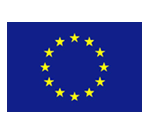   |
|
 |
 |
 |
RESPONDER > about > methodology |  |
|
MethodologyKnowledge brokerage needs professional mechanisms, as there is currently no standard model for linking research and policy making. Cutting-edge Internet technologies can ensure continuous exchange of information and knowledge, whereas face-to-face interactions nurture relations and build up trust while leaving room for informal exchange. RESPONDER will combine both in a demand-driven way, offering clearly defined interfaces to other networks, while establishing a unique position through its systemic approach. RESPONDER uses the well-established method of “participatory system mapping” to make the different paradigms, contradicting approaches and trade-offs of sustainable consumption and economic growth explicit and serve as basis for much improved mutual understanding. Participatory system mapping combines the advantages of systems thinking, soft system analysis and modelling. It is based on the concept of system dynamics, which allows to focus on a problem and identify its scope and causes in the system structure. By focussing on ‘policy levers’, systems models serve as a basis for comparison of intervention options and therefore serve as an important feedback tool for learning and policy design. RESPONDER’s system map will have the form of a causal loop diagram, also called ‘influence diagrams’. A causal loop diagram depicts causal relations between selected variables, focusing on positive and negative feedback loops and development trends. Most commonly, causal loop diagrams serve as the qualitative, structure-building step in modelling. Causal loop diagrams have been used widely. This method was chosen as particularly fitting for the RESPONDER project:
|
|||


 |
© 2024 Institute for Managing Sustainability |
The RESPONDER project is funded by FP7 under the Environment (including Climate Change) theme. |
 |
